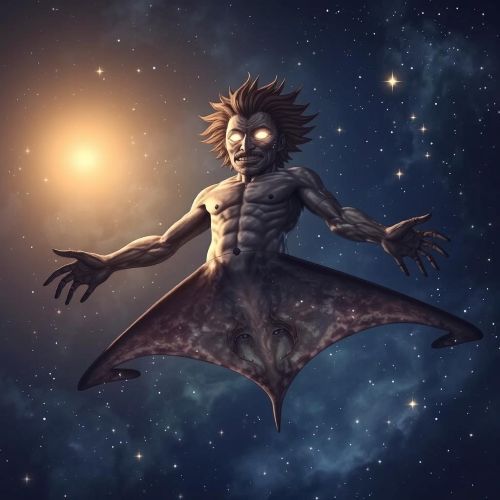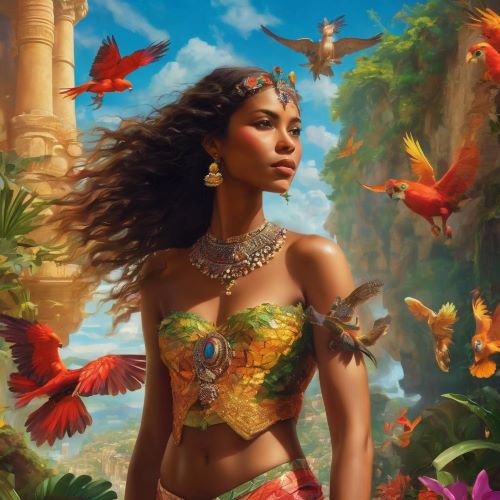Yapese & Ifaluk Mythology
The mythologies of the Yapese and Ifaluk peoples, both from the Caroline Islands of Micronesia, reveal a profound spiritual connection between humanity, the sea, and the cosmos. Though separated by geography — Yap being one of the largest and most influential islands in the western Pacific, and Ifaluk a small coral atoll — both cultures share a worldview that sees life as an unbroken dialogue between the natural and spiritual worlds. Their myths, passed down through chants, oral poetry, and ceremonial storytelling, embody harmony, respect, and the eternal rhythm of the ocean. Yapese and Ifaluk mythology is not a distant relic of belief but a living philosophy that guides daily life, navigation, and communal ethics even today.
In Yapese mythology, creation begins with the primordial ocean — a boundless expanse of spirit and potential. The divine being Yalafath (or Yalafathil) is said to have gathered sand and coral from the ocean floor to form the islands of Yap, breathing life into them through sacred words. From the first land rose trees, animals, and humans, each infused with divine essence. The Yapese see the world as layered — the physical realm intertwined with the spirit world (Aniti), inhabited by ancestral beings who oversee human conduct and the balance of nature. Every grove, stone platform, and current carries memory and meaning, connecting the living with their ancestors. Offerings of food and betel nut are made to the spirits, ensuring harmony between earth, sea, and soul.
The Ifaluk people, who inhabit one of Micronesia’s smallest inhabited atolls, share similar beliefs centered on the sacred unity of community and environment. Ifaluk mythology teaches that the world is a living, breathing organism shaped by divine intention. The creator deity, sometimes described as Ligohang or an unnamed ancestral spirit, formed the islands as stepping stones across the sea. The atoll’s lagoon, winds, and stars are not mere natural features but living manifestations of divine power. The Ifaluk see the sea as both a giver and a teacher — a realm of gods and ancestors who guide fishermen, navigators, and spiritual leaders.
A central theme in both mythologies is balance — between the individual and the collective, the human and the environment. In Ifaluk tradition, emotions themselves are spiritual forces: anger, greed, and arrogance disrupt cosmic order, while compassion and cooperation sustain it. This concept mirrors the Yapese belief in moral equilibrium maintained through ritual, respect, and ancestral wisdom. In both cultures, myths are woven into daily life — the way one sails, plants, prays, and speaks carries spiritual significance. The Yapese stories of Tagar, the divine voyager, and the Ifaluk legends of spirits within the wind and waves emphasize the same truth: humanity is a participant, not a ruler, in creation’s vast and sacred cycle.
Yapese and Ifaluk mythology remind the world that spirituality is not confined to temples or texts but flows through the rhythms of the sea, the whisper of the wind, and the memories of the ancestors. They stand as testaments to the Micronesian belief that the divine is ever-present — not beyond the horizon, but in every tide that rises and falls upon the living world.



